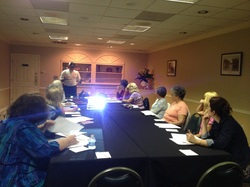
We met Bert Winkler through Matt Clemmons who owns Aardvark's Kayak Co. in Crystal River. Bert grew up in Miami and spent much of his childhood fishing with his father. He has developed a passion for custom rod building which as carried over into custom lures as well. http://oldfartcreations.com/ When the NCLA club first got off the ground last year, he offered to help out by being one of our guest speakers teaching us the difference between rod action and what to look for when picking out a rod. There were more ladies at that meeting than we had at any other meeting the entire year. We invited him back again this year to give us some advice on how to outfit our rod with line and tackle. His easy-going nature makes him a favorite with the ladies.
***We were missing two of our regulars, Theresa and Alice, but welcomed two new faces, Julia and Sue.***
***We were missing two of our regulars, Theresa and Alice, but welcomed two new faces, Julia and Sue.***
The Peacock Assassin:
Safety First
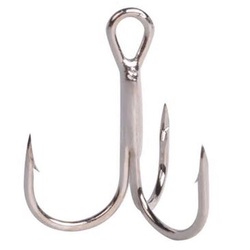
Bert starts off any presentation with a discussion on safety. As a professional electrician, safety is #1 on his priority checklist. There are always hazards with any sport, including fishing. "Treble hooks are called 'gotcha's' for a reason", he warned us. He simply cautioned us to be extra careful when tightening knots to hooks. This is the task that causes most injuries because the hook barbs are so close to the hands and fingers. One wrong move and the barb ends up in the hands or fingers (or, if you ask my husband, the barb will sometimes end up in the leg).
Second on the safety priority list was sunscreen. No surprise there! I attended a ladies fishing seminar several years ago in Stuart and the off-shore charter boat captain said, "Ladies, if you want your face to look like mine, don't wear sunscreen." He need say no more!
Second on the safety priority list was sunscreen. No surprise there! I attended a ladies fishing seminar several years ago in Stuart and the off-shore charter boat captain said, "Ladies, if you want your face to look like mine, don't wear sunscreen." He need say no more!
Line Selection - Pros & Cons
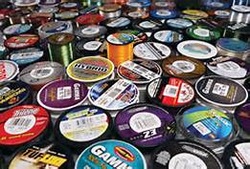
We moved into the discussion of tackle and Bert confirmed that most of us ladies primarily use light, inshore tackle which was an important piece of information if he was going to teach us about fishing line. We were all given a hand-out to follow as he began to explain the difference between certain types of fishing line from flurorcarbon to braid to monofilament. Although the hand-out had very detailed information on it, Bert took a few minutes to review some basics.
Monofilament: Con - stretches very easily which can cause you to lose fish more often.
Con - it is easily damaged (from oyster bars or fish teeth) and may need frequent trimming.
Con - if it sits on the reel too long, it tends to hold that spiral form as it comes off.
Pro - it's pretty inexpensive compared to braid or fluorocarbon, which is good on the pocketbook.
Pro - adequate for most inshore recreational fishing. "fishing for fun"
Pro - any fish you can catch on braid and fluorocarbon, you can also catch using monofilament.
Pro - it floats easily so is great as a leader line for top-water lures.
Braid: Pro - has no stretch at all so feeling a 'fish-on' is almost instantaneous.
Pro - because it is thinner than the other two lines, more of it can be spooled onto a reel.
Pro - has become the most popular of all three lines.
Pro - lasts longer so there is less re-spooling.
Con - it's not cheap.
Con - it has a tendency to collect wind knots.
Fluorocarbon: used mostly as leader line
Pro - has very little stretch, so again, tied to braid line, it's easier to feel a hook-up.
Pro - it's much more abrasion resistant and doesn't have to be trimmed as often.
Pro - it's practically invisible under water so not as obvious to the fishies down there.
Con - it's expensive, so is typically used by serious anglers who are willing to spend a little more .
Monofilament: Con - stretches very easily which can cause you to lose fish more often.
Con - it is easily damaged (from oyster bars or fish teeth) and may need frequent trimming.
Con - if it sits on the reel too long, it tends to hold that spiral form as it comes off.
Pro - it's pretty inexpensive compared to braid or fluorocarbon, which is good on the pocketbook.
Pro - adequate for most inshore recreational fishing. "fishing for fun"
Pro - any fish you can catch on braid and fluorocarbon, you can also catch using monofilament.
Pro - it floats easily so is great as a leader line for top-water lures.
Braid: Pro - has no stretch at all so feeling a 'fish-on' is almost instantaneous.
Pro - because it is thinner than the other two lines, more of it can be spooled onto a reel.
Pro - has become the most popular of all three lines.
Pro - lasts longer so there is less re-spooling.
Con - it's not cheap.
Con - it has a tendency to collect wind knots.
Fluorocarbon: used mostly as leader line
Pro - has very little stretch, so again, tied to braid line, it's easier to feel a hook-up.
Pro - it's much more abrasion resistant and doesn't have to be trimmed as often.
Pro - it's practically invisible under water so not as obvious to the fishies down there.
Con - it's expensive, so is typically used by serious anglers who are willing to spend a little more .
Braid Line & Wind Knots
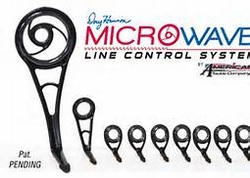
As Bert mentioned in the comparison of fishing line, braided line seems to be more susceptible to wind knots. As a custom rod builder, he has access to a website called mudhole.com. This site holds a lot of information about fishing equipment. He suggested visiting the site and looking around. This is where he discovered the microwave line control system which is designed to practically eliminate wind knots as braid line is being cast. Check out the video below:
Targeting Fish
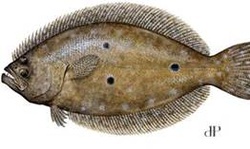
Now that we learned some basic differences in fishing line and what's best to use, we moved on to discussing tackle for specific fish....starting with flounder. Bert assured us that it is fairly common to catch 4 - 5 pound flounder in this area but warned us not to expect to bring in a 15 - 20 pounder around here, and even the smaller flounder, because of their flat design, makes for a great fight on light tackle. He gave us another hand-out with some suggested specifications of rigging for flounder right down to the hook size. This would be: 15 inch, 30 lb monofilament leader line with a sinker attached and a 4/0 circle hook with a live shrimp, finger mullet or artificial jig. Typically, this would just be slowly dragged on the bottom which is where a flounder would easily spot it.
Basics of Popping Corks
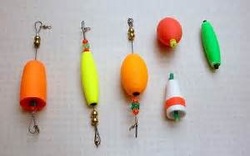
CAJUN THUNDER !!!
Best popping cork out there!!
Bert handed out some really great information on popping corks for a little 'quiet time reading' as he called it. Popping corks come with beads and weights. Once this unit is tied to the line, the colored beads should be on top of the cork and the brass weight should be below the cork. Popping corks are designed to imitate the sound of a shrimp 'popping' its tail as it propels itself through the water - attracting predatory fish (trout, reds, jacks, etc.) If you have a crafty nature about you, you can easily make them yourself. The beads and brass weights 'pop' against the cork as you jerk your rod from time to time. Trout are especially attracted to the sound it makes.
Best popping cork out there!!
Bert handed out some really great information on popping corks for a little 'quiet time reading' as he called it. Popping corks come with beads and weights. Once this unit is tied to the line, the colored beads should be on top of the cork and the brass weight should be below the cork. Popping corks are designed to imitate the sound of a shrimp 'popping' its tail as it propels itself through the water - attracting predatory fish (trout, reds, jacks, etc.) If you have a crafty nature about you, you can easily make them yourself. The beads and brass weights 'pop' against the cork as you jerk your rod from time to time. Trout are especially attracted to the sound it makes.
Top-Water Lures

Top-water lures are great when fishing for trout or redfish. Bert talked about the most desirable rod length, how to find the recommended fishing line weight which should be stamped somewhere on the rod itself. Also stamped on the rod should be the weight of the lure that is best to use for a smooth cast. You don't want your lure to be too light (like a fly-fishing lure), or too heavy (like a deep sea lure). A cast is greatly affected by the weight of the lure you have tied to the leader line. He took a minute to briefly explained the difference between rod action and power. His suggestion was a fast action rod because it's easier to work when fishing with artificial lures. He went on to demonstrate how to work and retrieve a top-water lure so that it makes the desired a zig-zag motion on the top of the water, a diving plug so that with a few quick jerks of the rod it makes the lure dive downward a few inches and then rise upward again imitating the reflex of an injured bait fish.
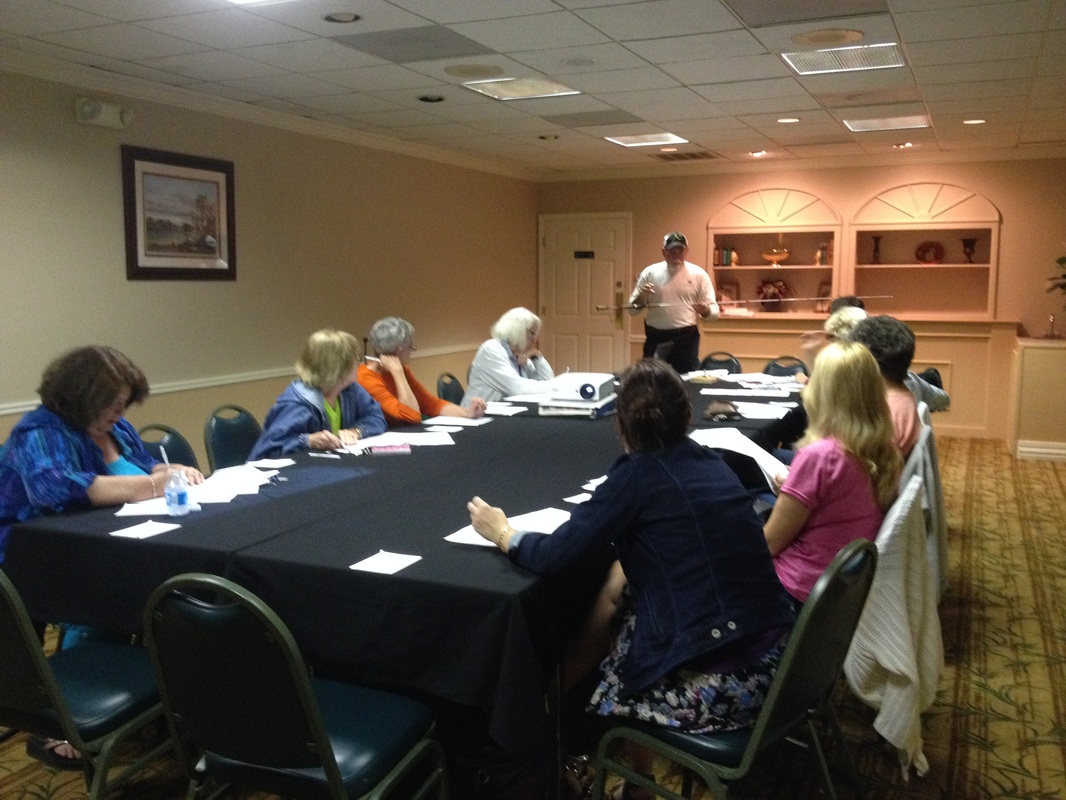
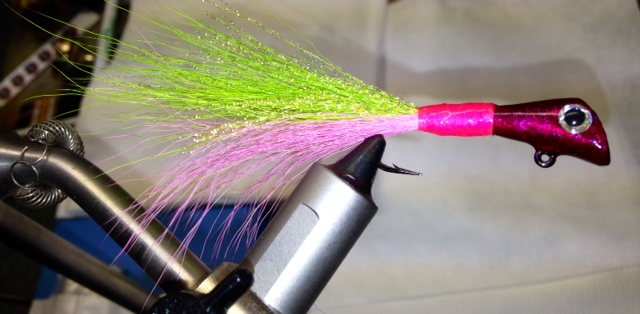
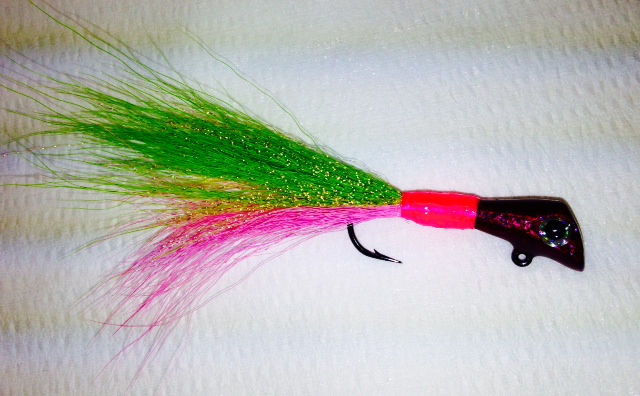
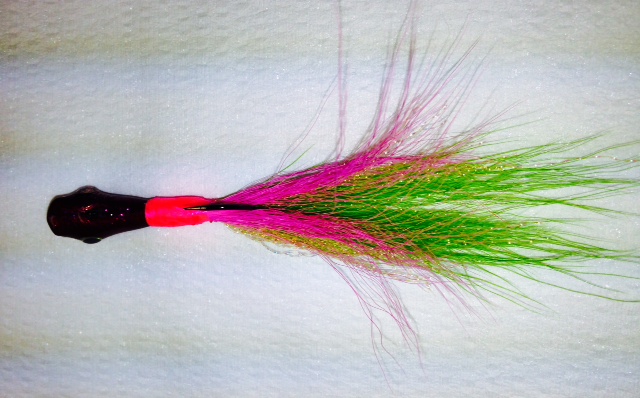
 RSS Feed
RSS Feed